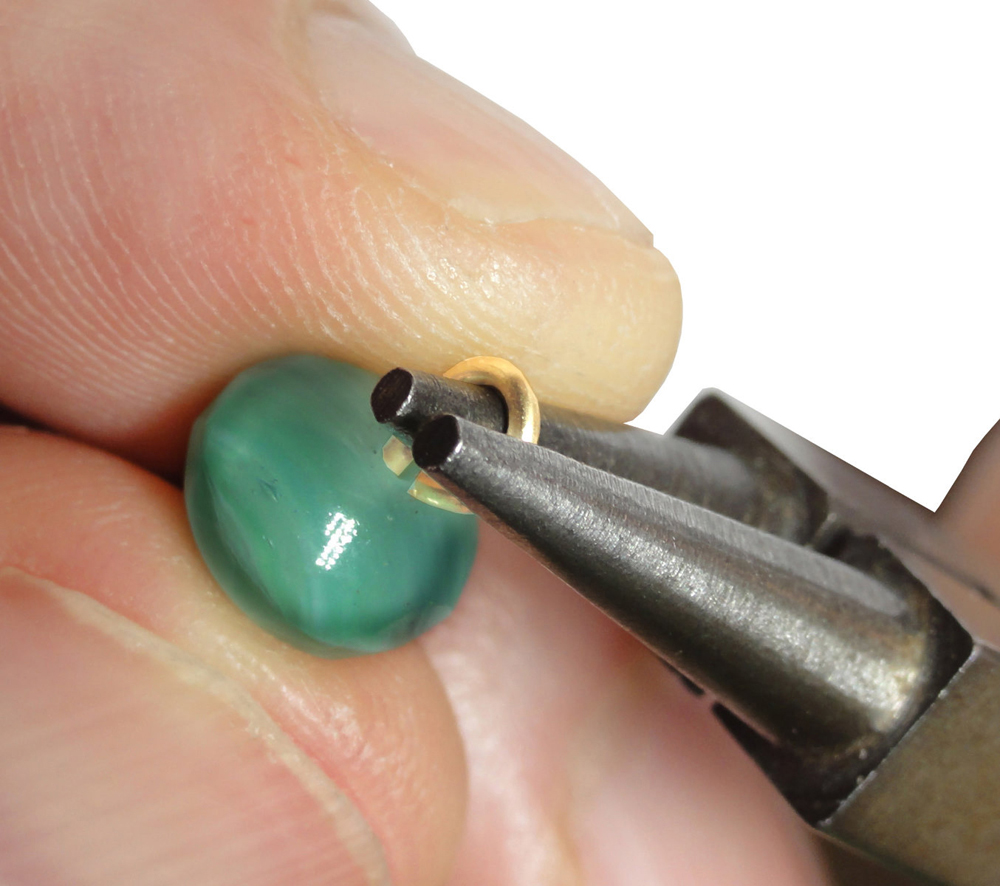Making a simple loop is essential to producing durable and professional quality jewelry. For this skill you will need three tools: round-tipped( also know as ‘rosary’) pliers, chain-nose pliers, and as good a wire cutter as you can afford.
The photos show step-by-step how a bead link with two simple loops is created. However, the method I’m teaching here will work whether you make two loops with wire and a bead to create a link, or you make a headpin-based dangle earring with one loop at the top.

Make simple loops using 20 gauge or heavier wire, because a lighter gauge of wire may be too weak to hold the shape of a simple loop. Use the heaviest gauge wire that will go through a bead (usually 20 gauge wire).

Hold the spool and the end of the wire firmly in one hand, and use tools with your other hand. Thread bead onto wire. Snip off the end tip with your flush cutters so that the end is clean-cut. The wire should stick 3/8” (or 11mm) out of the bead.

Bracing with your hand holding the bead on its wire, use your chain-nose plier to bend the 3/8” length of wire at a 90 degree angle, pointing away from you. The 90 degree bend starts where the wire comes out of the bead. Your tool hand is palm upwards. Your other hand braces the work. After you’ve made the angle bend with the needle-nose pliers, change to the round-tipped pliers to make the loop shape. To start, gently grab the tip of the wire with the round-tipped plier.

Curl the wire over the curved back of the plier’s top jaw by curling your tool hand towards yourself. When making this movement, I think of an ocean wave curling towards the shore.

You have created the loop shape. Gently nudge the wire end towards where the wire is coming out of the bead, and nudge it so it touches the end of the bead and is closed. Inspect the shape of your loop to ensure it looks like a round balloon, not a letter P or off-center. If your loop isn’t perfectly centered above the bead, adjust its position with the chain-nose pliers.
To complete your link, turn your work upside down and repeat the steps listed above. If you’re making a loop for a headpin earring dangle, make sure the beads are pushed all the way down the headpin, no gaps, before you make a loop.
Here is how you manage opening and closing the loop without ruining its shape. Use the needle-nose pliers to open and close your loops. Push the wire end forward like opening a door, and push it firmly closed when you are done. Always check your work to ensure the loop is really closed, otherwise it may fall off what it is linked to.
Practice makes perfect, so use inexpensive art wire and base metal headpins to get your technique right, before using more expensive metals. Above all, work methodically, step-by-step, don’t try to combine steps, and – most importantly – use the correct tool for each step. Learn to make simple loops, whether you use my method or another method that you find elsewhere that works better for you, whatever it takes.

As well as making your work more durable, good simple loops simply looks better, and shows professionalism, pride in your workmanship and solid mastery of technique. Happy beading!

